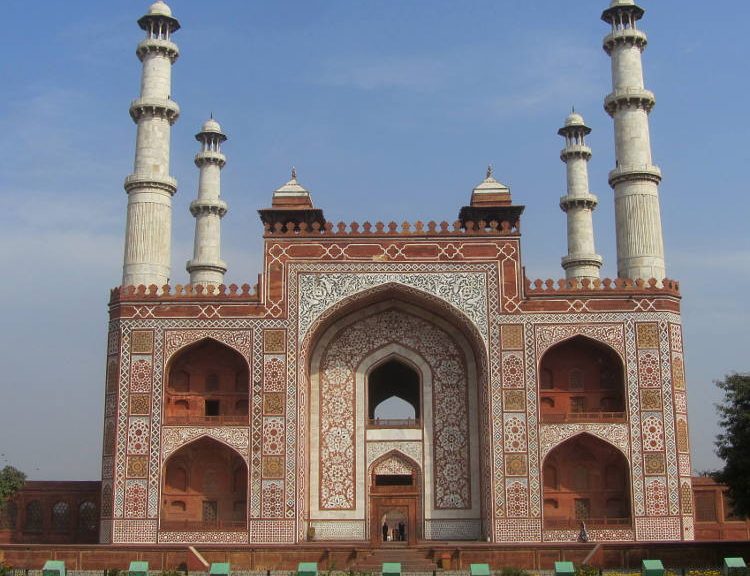
Agra
From Khajuraho to Agra was the first daytime trip by train. Thankfully, I suppose, it was very uneventful and arrived in Agra pretty much to time. My first impressions of Agra were not good. I arrived at dusk and all I could see were clouds of dust and pollution and smoke. My throat was already burning by the time the tuk-tuk driver dropped me off at my hotel, the Coral Court Homestay.
One positive thing was the fact that he was happy to take the fixed rate fee of 150Rs for the journey. I chose the Coral Court because it had an unprecedented score of 9.7 on Booking.com. I have to say, my first impressions weren’t this high as I was given the last available room which was in the centre of the building and therefore windowless and the shower broke as soon as I got in and the water was tepid at best. However, the owners lived on site and were very friendly and helpful and soon all was sorted and I sat down to a very welcome pumpkin curry. My proper explorations into Agra would begin after a good night’s sleep.


I had planned on three days in Agra, the first to see Akbar’s tomb and the Agra fort and downtown, Day two to see the Taj and the so-called baby Taj and Day three Fatehpur Sikri. I made a slight late change in plan by staying the third night in Bharatpur so I could see Fatehpur Sikri in the morning and pop in to the Kaladeo National Park, which is very close to Bharatpur, in the afternoon.
Day One
I was up bright and early to go to Akbar’s Tomb, in the suburb of Sikandra. I was told I could get a bus from Billi Ghar bus stand but no one there seemed to know so I ended up having to get an extended trip in a tuk-tuk. Anyway, I must have been there early as I was the first tourist at the ticket office. Although you are now supposed to be able to pay by credit or debit card at all of the major sites in India, as part of Narendra Modi’s drive to make India a cashless society, this hasn’t got through to the people at the ticket offices.
And this was the case today. He also didn’t have any change. This was also very common because Mr. Modi had recently taken all of the old bank notes out of circulation – so called demonetization and many people were reluctant to hand over their small notes. Demonetization wasn’t actually as much a problem as I had thought before coming to India (I managed to pay for hotels with a credit card) but there were still problems. Recently, the entrance fees for all the monuments had doubled so it was quite a drain on cash in the tourist centres. However, in this case luck was at hand as a friendly security guard showed up with a huge pile of notes and provided some much needed change.
Once through the gates I had time to appreciate this stunning building and it was stunning. In fact there were a few stunning buildings. The first was the huge gateway built of red sandstone strikingly inlaid with white-marble and with four three storey minarets at each corner. Once through the gateway you face the mausoleum itself which is more delicate. Surrounding the mausoleum are large manicured gardens, home to chital deer, antelopes, monkeys and many species of birds including the quintessential Indian bird the peacock. Really impressive.
In common with many grand Mogul buildings, the surrounding garden is described as a charbagh and divided into four with the mausoleum at the centre surrounded by raised walkways leading to the four gateways. Also in common with other Mogul tombs, the inside is very plain. In fact there is a narrow inclined passageway which leads to the false tomb at its very heart which is also very plain. I say false, as the actual tomb is buried below, the same as at the Taj Mahal.
The whole experience was a real highlight for me, made even better by the fact that there were very few people about.














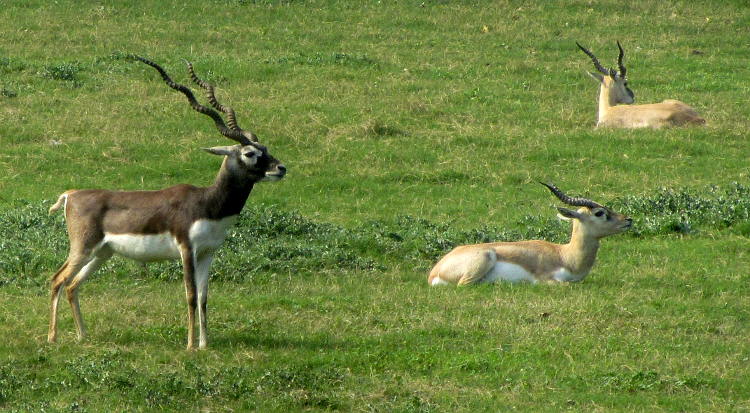
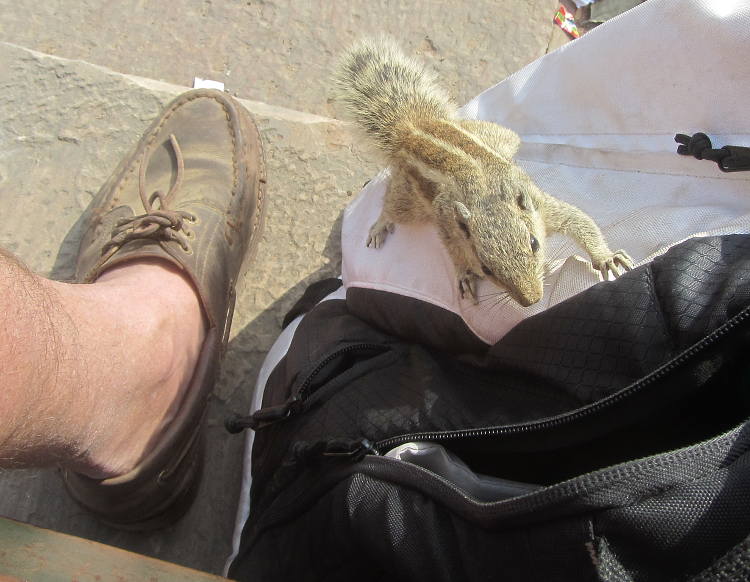
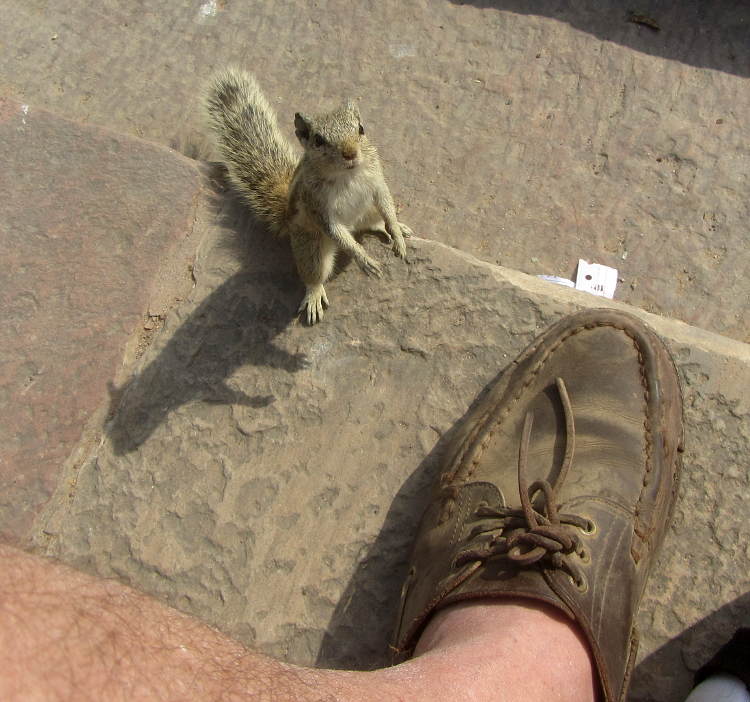
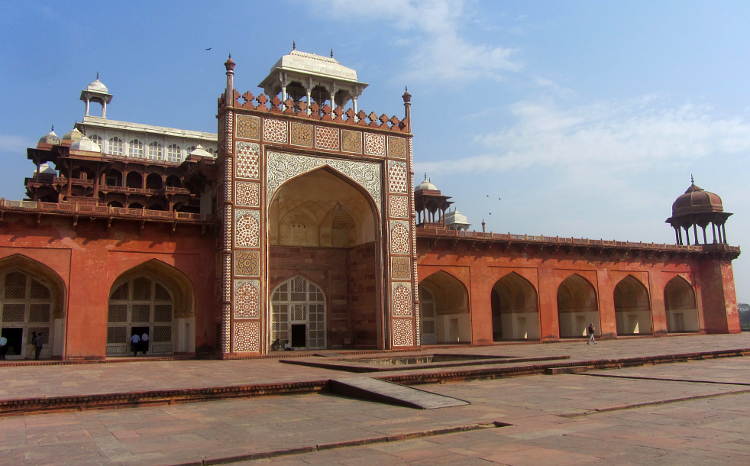
From Akbar’s tomb I walked to the nearby tomb of Maryam, Akbar’s wife and Jahangir’s mother. Here I was fortunate enough to save my valuable change and pay the 200Rs fee by credit card. Again, I was the only tourist to enjoy this fascinating building built in 1625. In fact the original building was built in 1495 and later converted for its use as a tomb.
As I was wandering around the gardens, I happened to look out over some waste ground adjoining the gardens to see a church. This is the Church of St. John in the Wilderness, the oldest Protestant church in the region. Although I enjoyed my time of quiet contemplation there, some had a very different experience.
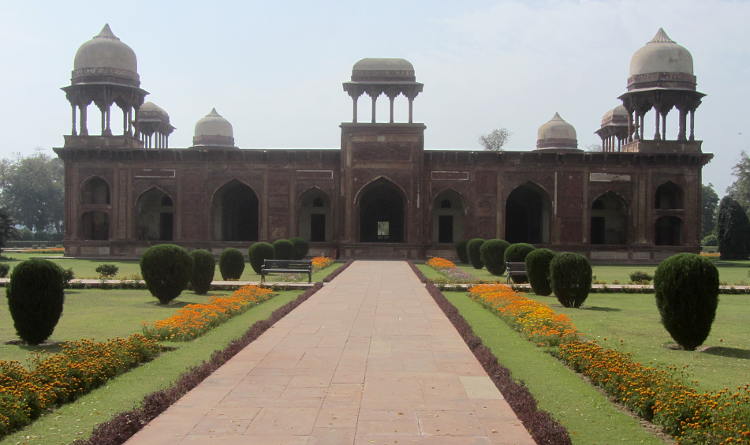
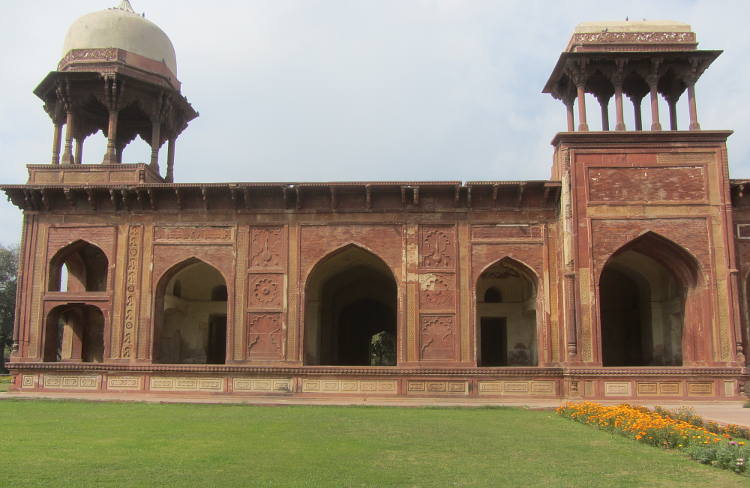
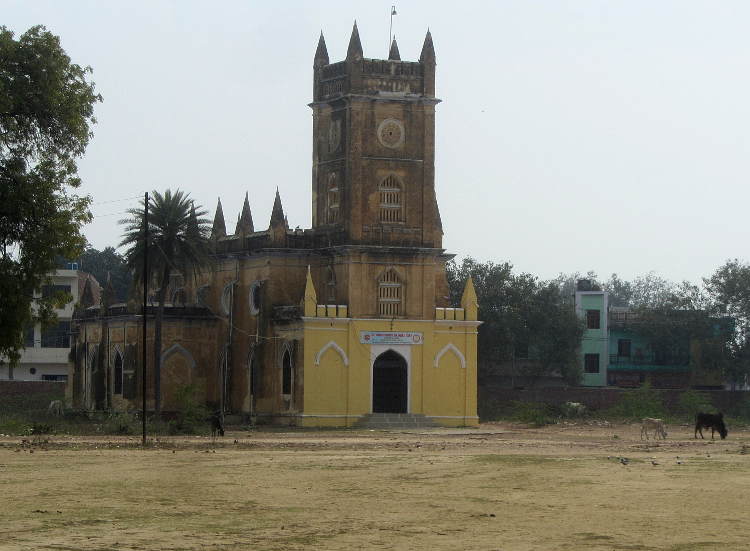
After the tombs I headed back into the city and to the Agra Fort. Here I met up with the hordes of tourists and forked out my 550Rs entry fee. I don’t know whether it was the large fee or the large number of mobile phone/camera toting touroids but I wasn’t overly impressed with the Agra Fort. Large, yes, plenty of quite interesting buildings, yes, but it was a bit higgledy-piggledy. It certainly didn’t have the ascetic beauty of the mausoleums.
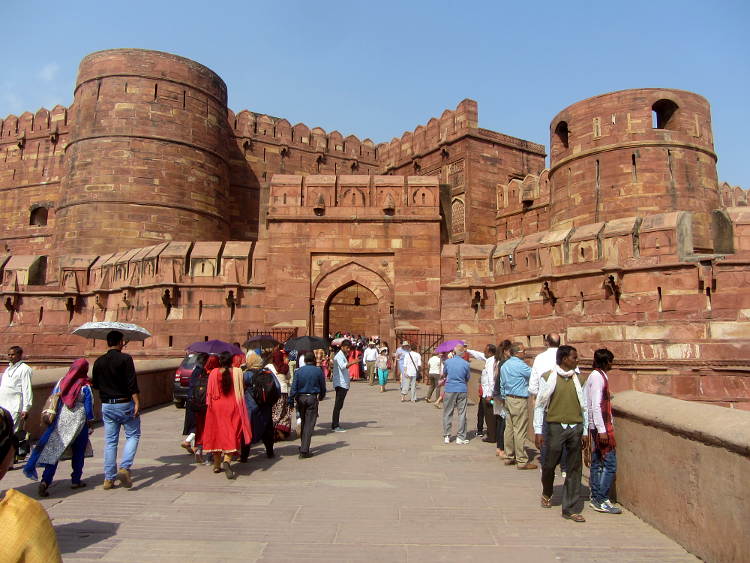
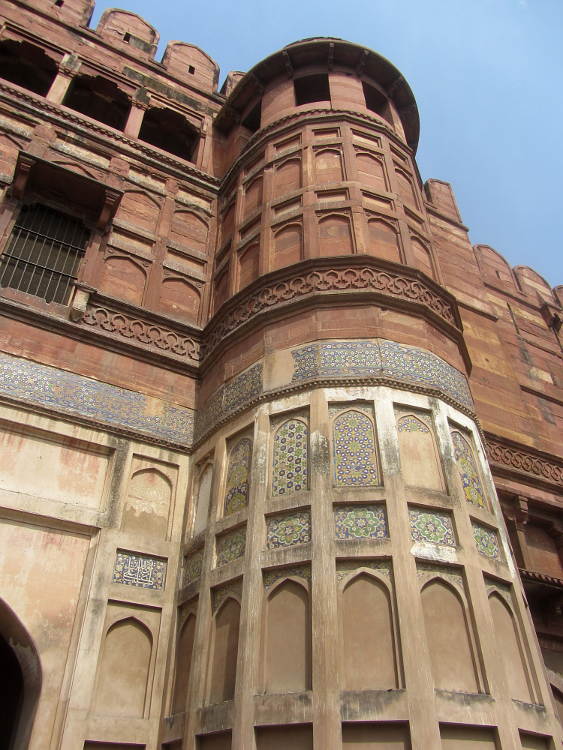
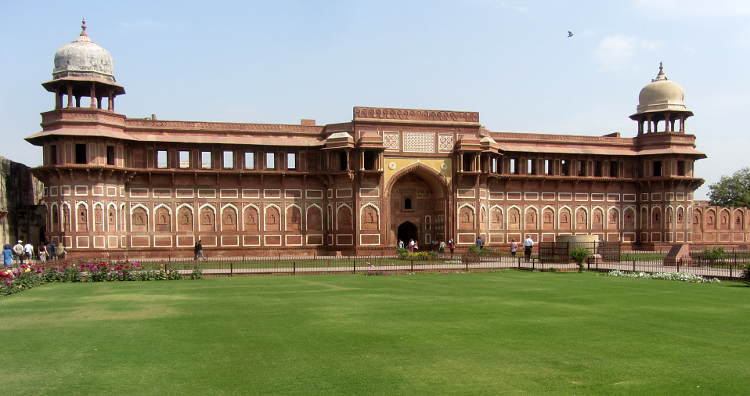
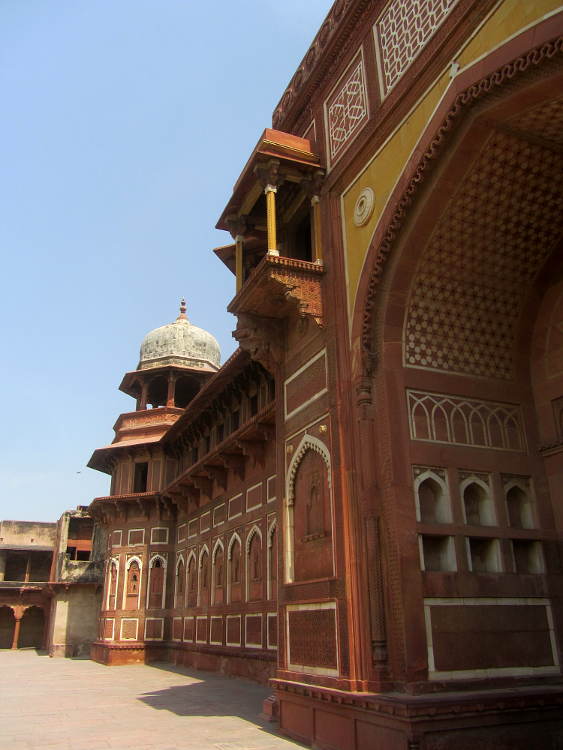
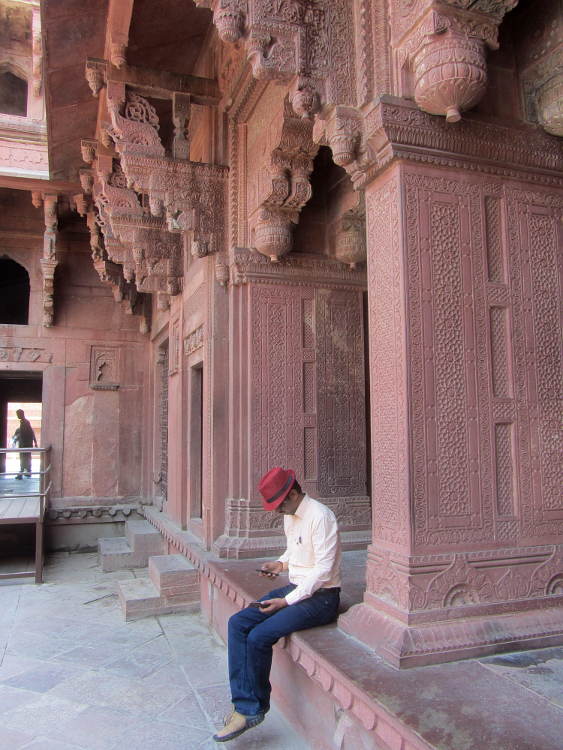
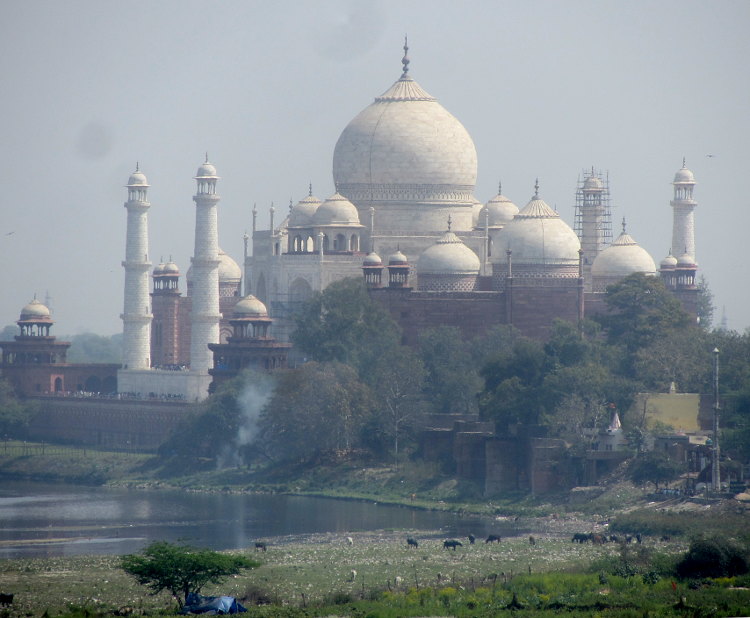
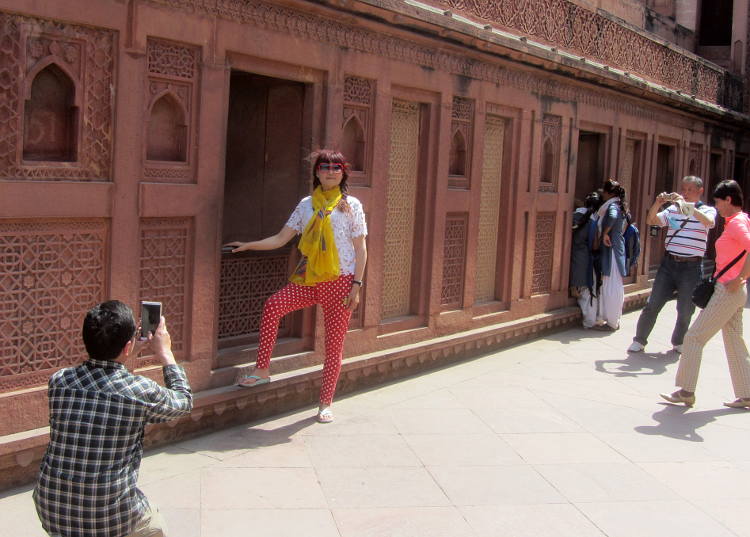
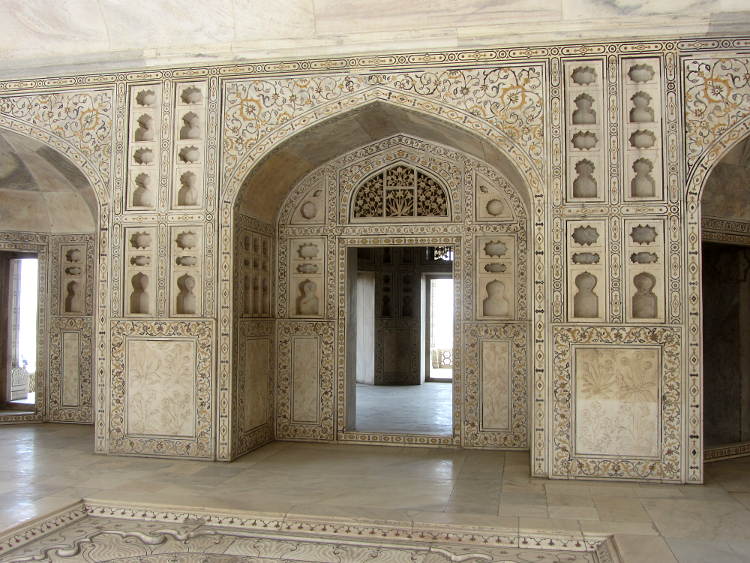
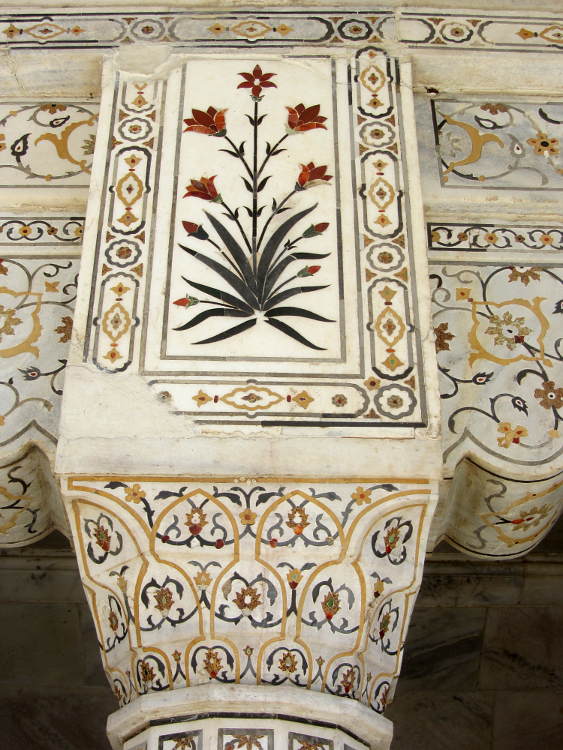
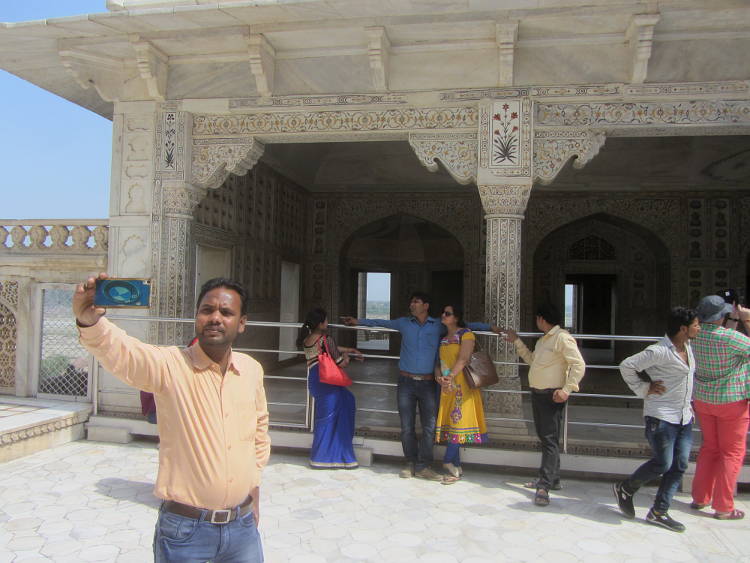
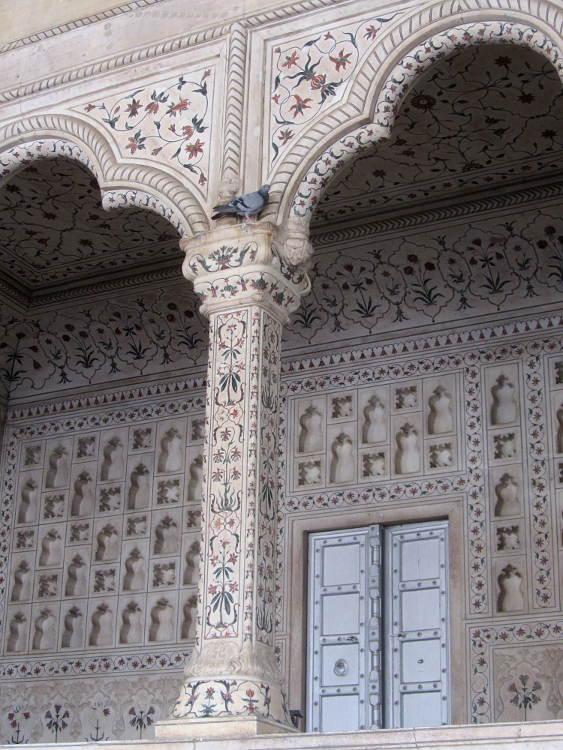
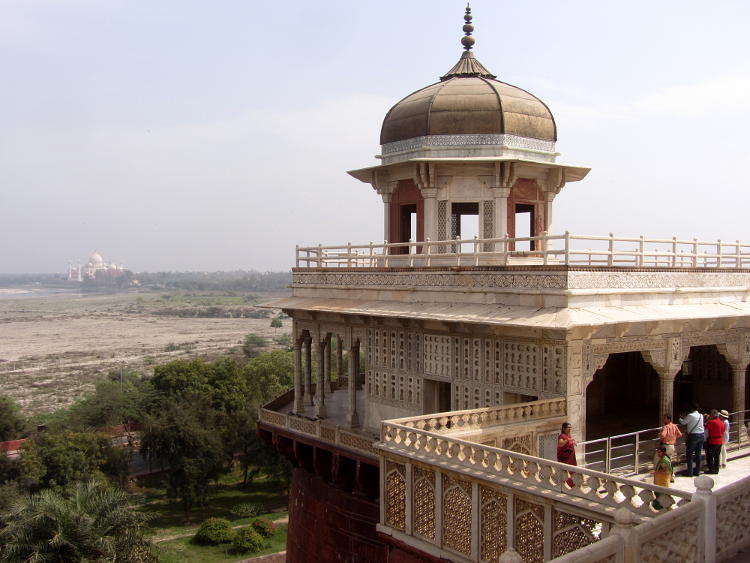
The entrance/exit to Agra fort is a bit out of the way so this time I took a cycle rickshaw for the trip around the walls and into the heart of old Agra. It was now way past lunch time but I spied a group of blokes standing around eating something interesting so I joined them. I think it was a type of chickpea curry with fried bread. At 30Rs for a large plate it was just the ticket!
Refreshed, I was ready for more explorations around the centre of town, known as the Kinari Bazaar. Right at its heart is the Jama Mesjid. Built in 1648 and one of the biggest mosques in India, it is actually quite a low key place, what a functioning mosque should be – a place of quiet contemplation amongst the hubbub of the old bazaar. The bazaar itself was the usual fascinating mixture of noise, dust, heat, colour and smells. I loved it!
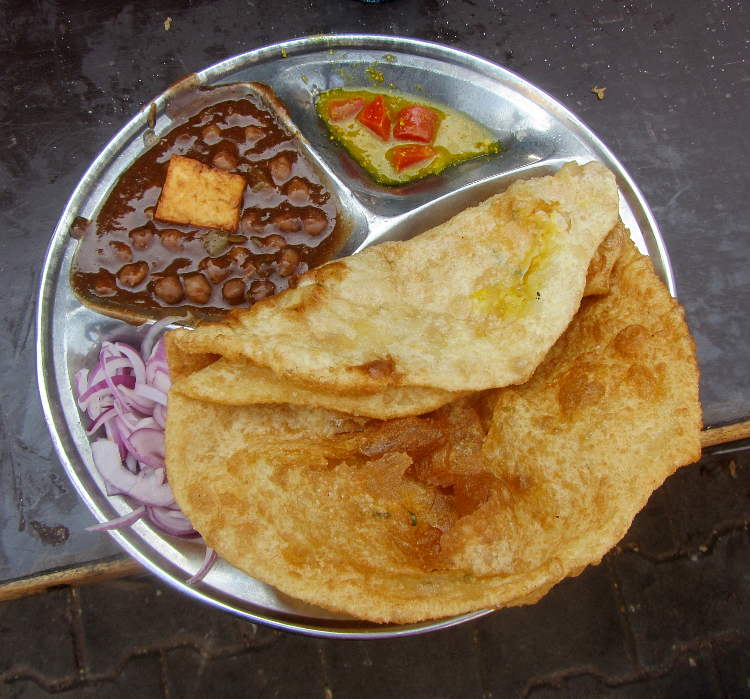
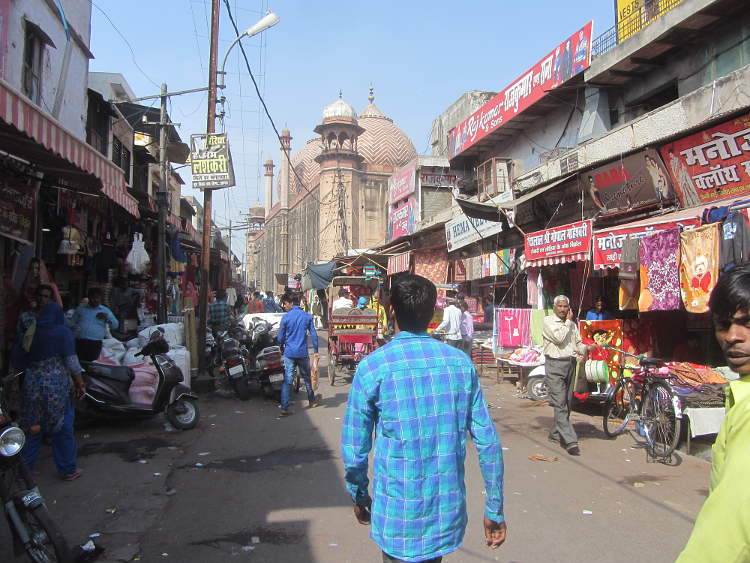
behind the main Friday mosque, Agra
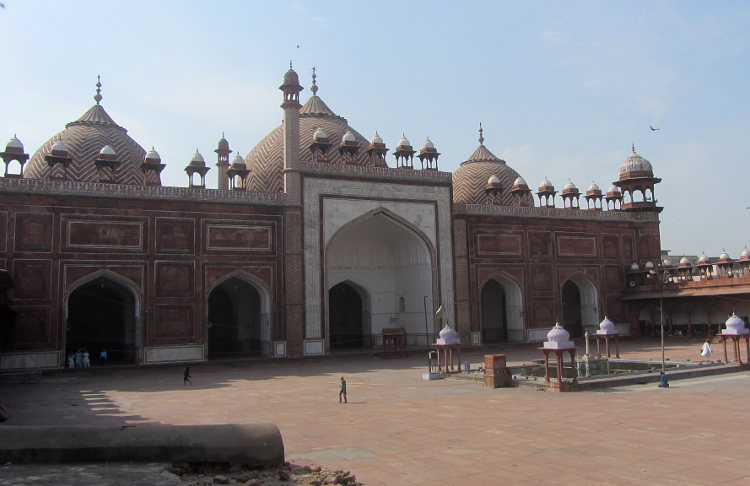
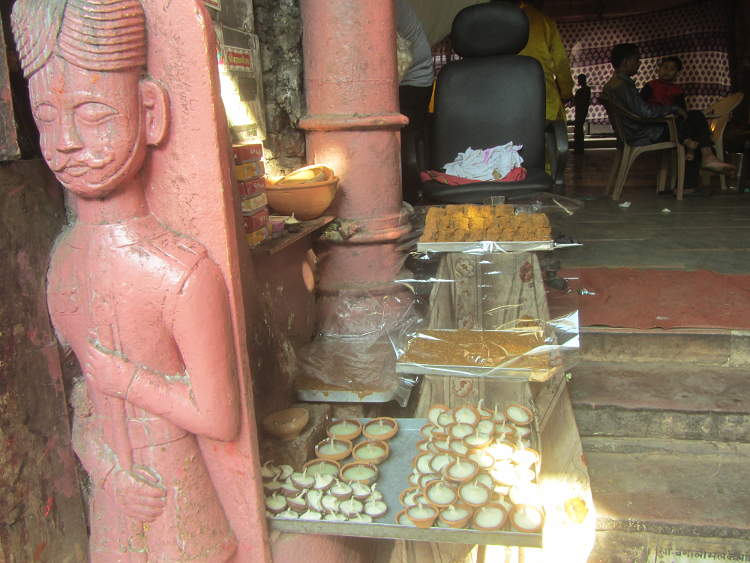
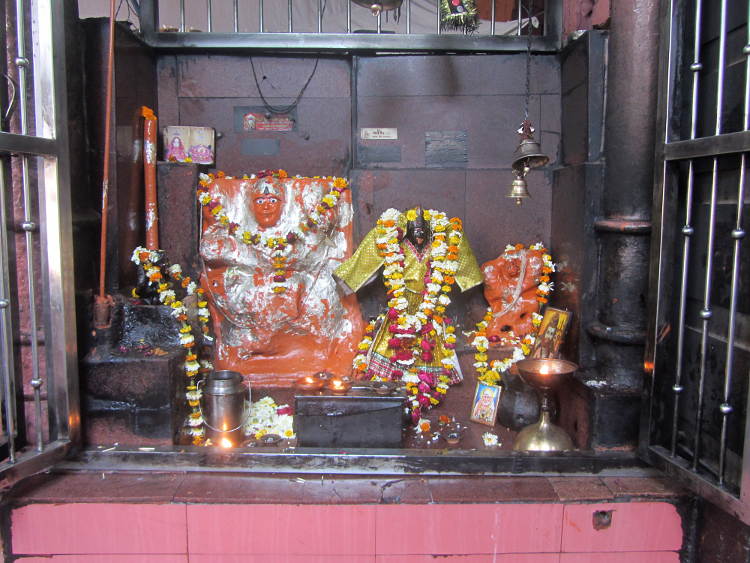
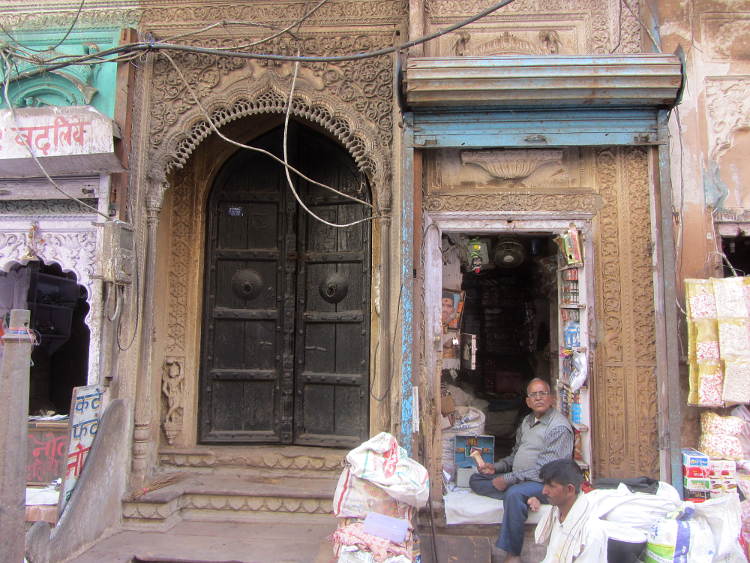
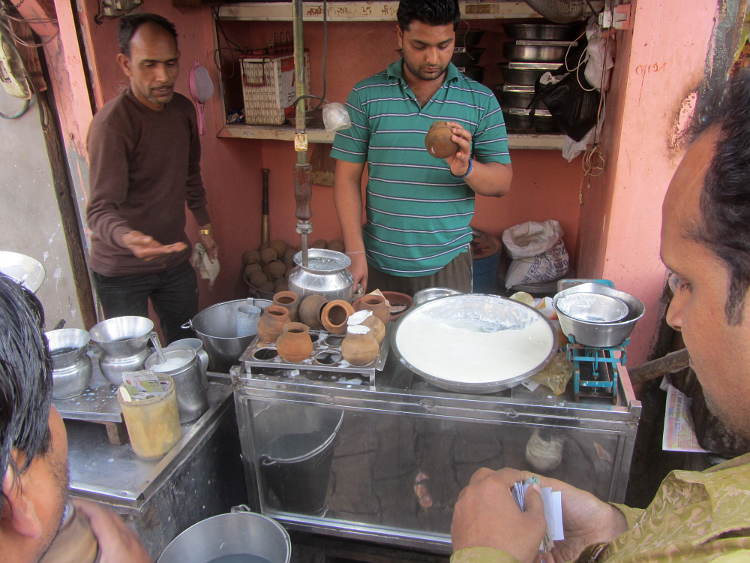
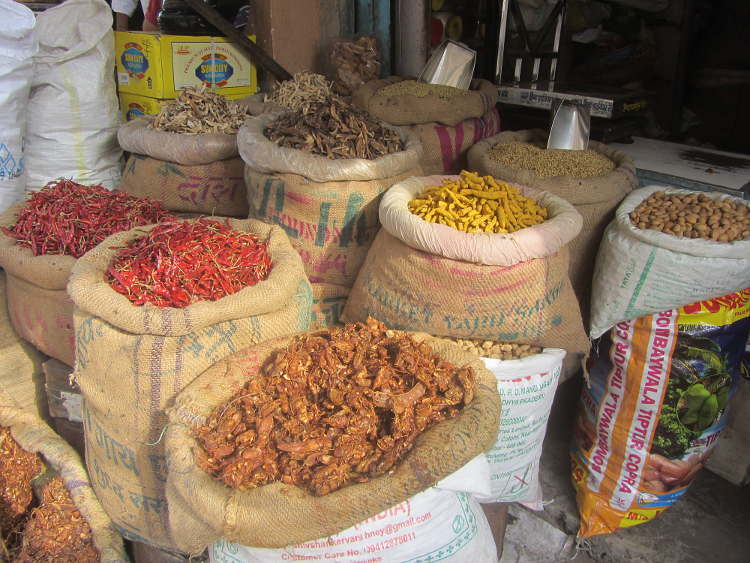


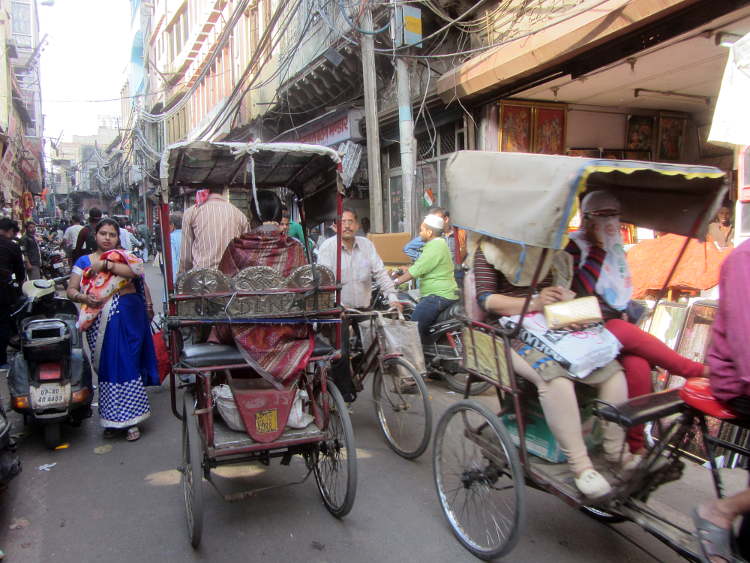
Day Two: Taj Mahal
Most tourists headed off to the Taj at dawn to get those rose coloured early morning photos. However, it seemed to me, later was a far better option. A lie in and fewer tourists. I think I got the best deal. The hotel was just a 5 minute walk away from the East gate which was very handy for me. According to the Lonely Planet, you can buy your ticket at any of the four gates but the east gate has the shortest queues of the lot, but this is because the ticket office is inconveniently located a 1km walk away at Shilpgram, a dire government-run tourist centre. This was fine by me, as there was no queue as promised and they provided electric shuttle buses to the entrance (included in the new ticket price of 1000RS!). However as I was buying my ticket I was told that I had to leave my small bag behind and my notebook. No notebooks? I was then directed to a sign which included all the other things not allowed including newspapers, crayons, flowers and explosives. Hmmm. Once at the Taj there were plenty of other signs: No walking on the grass, no photography of the men carrying out repairs and no videography (I managed to bypass this one and took a sneaky video when I was there – see below).
But of course, despite the distractions, the Taj is quite simply the most beautiful building in the world. Nothing comes close.
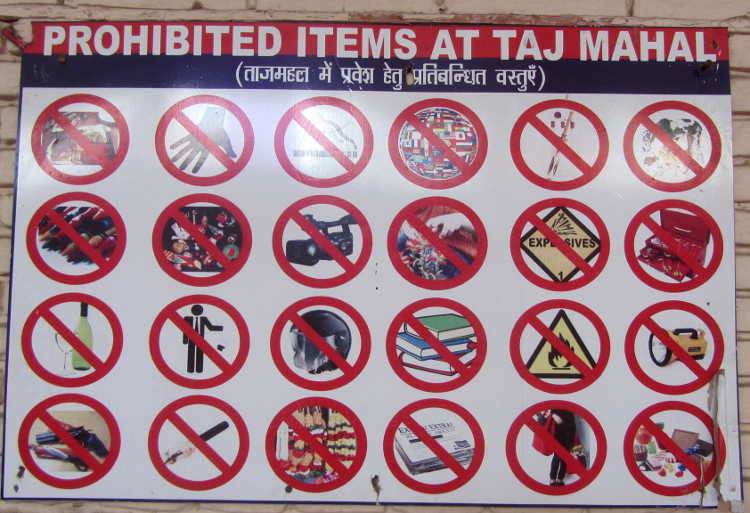


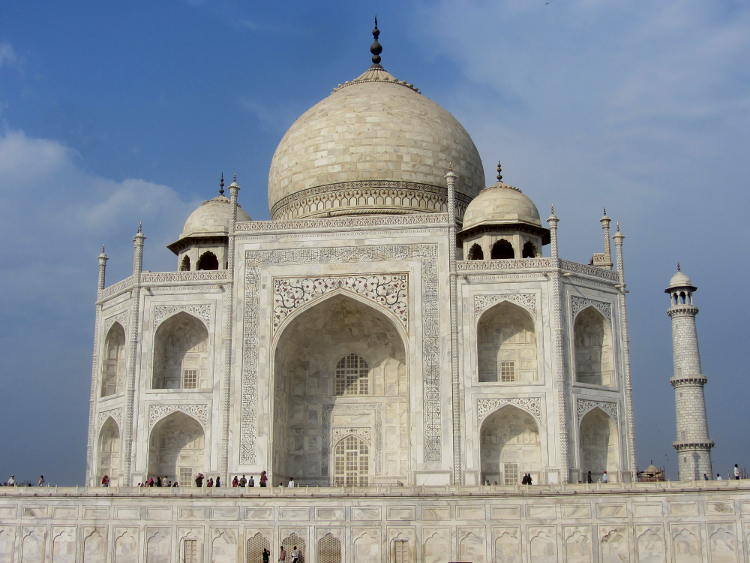
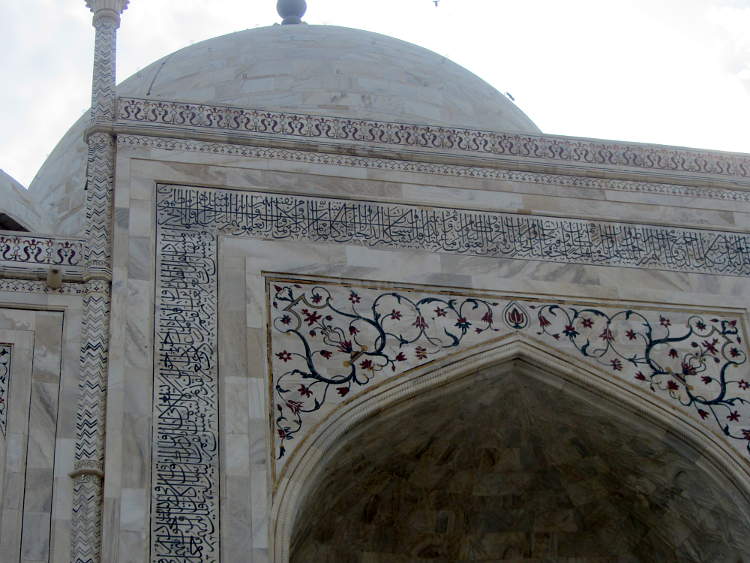







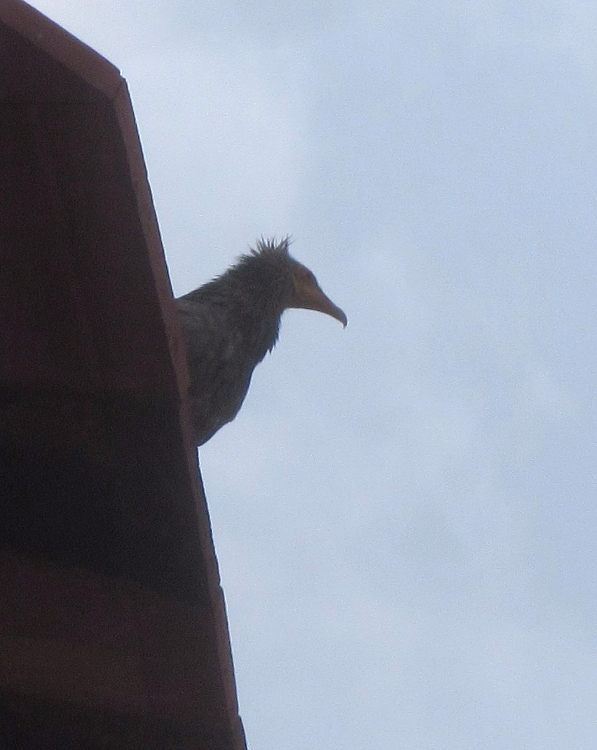


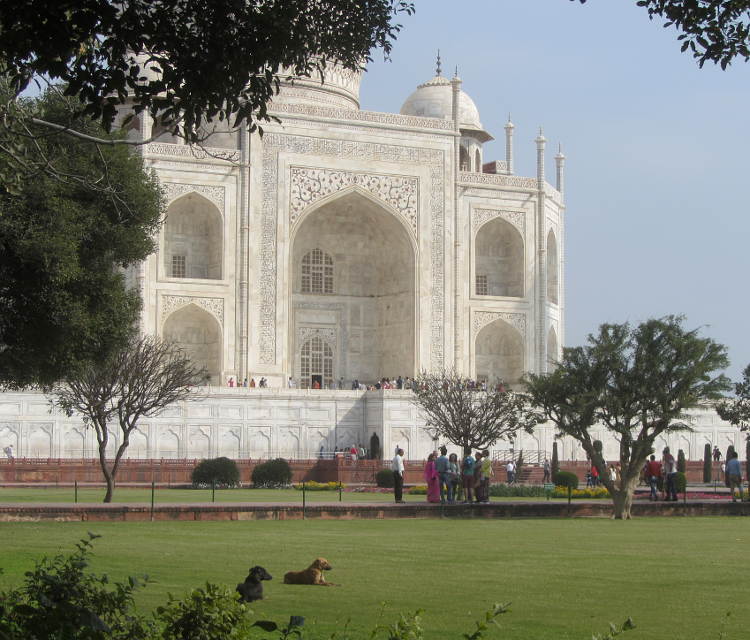


After the big Taj comes the baby Taj, or rather the Tomb of I’timād-ud-Daulah, who was the grandfather of Mumtaz Mahal of Taj Mahal fame. My first impressions (after the Taj Mahal) were that it was rather ugly. The proportions were just a bit too squat. However, on closer inspection, the coloured mosaics, inlay and delicate lattice work give it a totally different appeal and is well worth visiting.
Like the Taj Mahal it is on the banks of the Jamuna river but this time around the bend to the north and on the opposite bank. I came out of the Baby Taj compound and continued walking up the busy road that follows the river and past a hodge podge of buildings, shops, houses, waste land and impromptu garages and motorbike repair shops until I got to my final destination. This was the Chini Ka Rauza.
The Taj was packed, there were a few at the Baby Taj but here, I was the only tourist admiring this once impressive monument. I found it quite charming as it hadn’t undergone the intensive restoration of many similar places but it was still very impressive. It was the tomb of a man who was initially a poet but then rose to prominence as the Prime Minister of Shah Jehan. It is very different from all of the other Mogul mausoleums, more Persian, and was once covered in glazed tiles.
It is already impressively situated on the banks of the river and if they ever get round to a full restoration it would undoubtedly become a major tourist destination. For better or worse. For now, I only had to share it with a few lads playing football and a couple of kites making their nest in a nearby tree. Oh and a grumpy attendant who I woke from slumber inside the tomb.


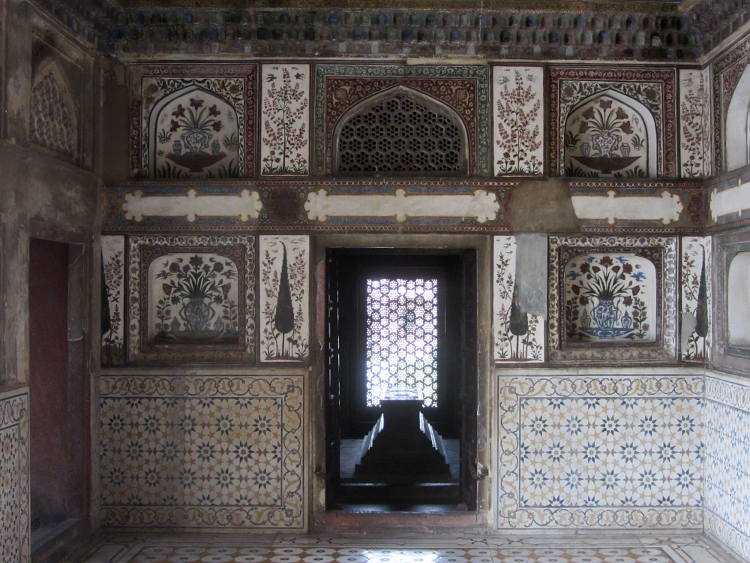









Day Three: Fatehpur Sikri and Kaladeo National Park
My original plan had been to stay in the town of Fatehpur Sikri but the hotel manager advised me against that. He suggested Bharatpur was a much better option and that I could also add a visit to the Kaladeo National Park. I went with his suggestion and also splashed out 2000Rs on a car to take me to Fatehpur Sikri in the morning and then drive on to drop me off in my hotel in Baratpur. Ah the luxury!
I arrived in Fatehpur Sikri pretty early. The driver told me he had to stay in the official carpark so I had to walk the rest of the way and he pointed me in the right direction. It was getting warm already but I soon arrived at the base of the stairs to the Buland Darwaza. This is the great monumental entranceway into the courtyard of the mosque and from there into the palace proper. It’s free to go here but I had already made a big mistake.
I was wearing my shorts like I had been doing for my entire trip throughout India, visiting many mosques along the way. But here, at one of the most touristy places in India, I was told I had to wear a sarong to cover my modesty and of course I also had to have an “official holy guardian” who assured me he wasn’t a guide. I have to say that the guide books are constantly warning gullible tourists of the hordes of touts and guides who will bother you at every turn of your trip to India. And as this was the only time it had happened to me, I was happy to play along.
Anyway, I wandered around the mosque and the courtyard and it was all very impressive and pleasant and my guide official holy guardian told me interesting things about the place then of course I waited for the sting. But it didn’t really come. He brought me to his brother who had his various knick-knacks and souvenirs for sale but it wasn’t a hard sell. Eventually I actually bought a carved soapstone tea light from him for 50Rs (after starting at 1500RS!) and gave him another 50Rs for showing me round.
Then I went into the Palace buildings proper, for which I needed a ticket (500Rs) but no skirt. I’ve read many reviews of the place on the Internet and they all gush about this lost-in-time, almost perfect, World Heritage Site city, but I think I had seen so much Mogul architecture over the past month that it was like, yeah, it’s pretty good but no more. As I mentioned before I much prefer the single edifices situated in stunning gardens. Give me the mausoleums anytime.
I think the problem I have is that I see the building but I think, “What was it used for? What did it look like when it was used? Where’s the furniture?!” In fact no one seemed to know the function of any of the buildings. I have to say though that it was large enough to easily accommodate the tourists and I did enjoy wandering around all the multifaceted buildings with their exquisite carvings. An impressive sight. And apparently as it was abandoned not long after it was built, that is why it is still in pristine condition.













So after a few hot hours wandering around the city I was back in air conditioned comfort and off to Bharatpur. I didn’t actually make it to the city of Bharatpur, as my hotel, the Iora Guest House was on the outskirts of town in a small residential area.
The hotel was pretty good I thought. Nice big room with big bathroom and a balcony outside and cheap (700RS) but I have to laugh at the website photos. They describe the dining hall and the library – a fairly small room with three tables for eating and a bookshelf. Anyway, good on them. It was soon clear why people came here, as the guest house walls featured a number of stunning photos of birdlife and indeed the Keoladeo National Park was just around the corner.
However, it was getting hot and the National Park could wait. I had a curried lunch (of course) and a much needed snooze.

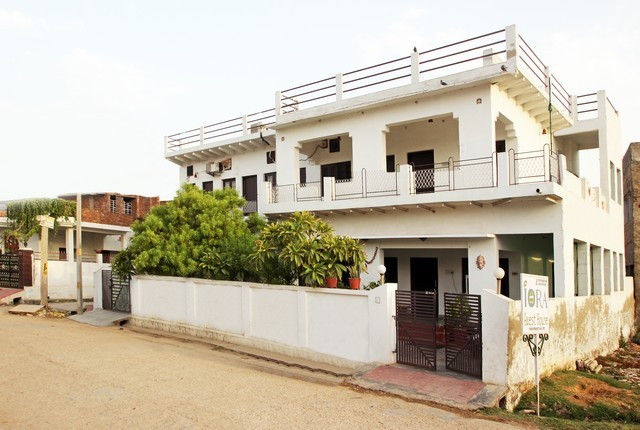

Around 3pm I got up, showered and was back out for the short walk to the national park entrance. The entrance is next to a busy road but once through the gate you can see the countryside open up in front of you and its billing as one of the best bird sanctuaries in India was enough to convince me. What was less convincing was the state of the bicycles for hire.
However, I had soon paid my 500Rs entrance fee and 25Rs bicycle fee (that was a fair price considering the state of the bike!) and I was off. The park consists of a number of trails which separate large tracts of shallow wetlands. This is where all the birds are and they are very easy to see, an added bonus for an inexperienced birder like myself. There were a few people around with binoculars (I presumed serious birders) so it was quite handy to stop by them to see what they were looking at and then get rewarded by the sight of an interesting creature.
I have to say I was more impressed by the park than Fatehpur. There were loads of birds and I was really pleased to see a Nilgai (the largest Asian antelope) and get quite close to a number of jackals. Almost even better the bicycle wasn’t too bad and I had a very pleasurable few hours cycling around these magical wetlands.













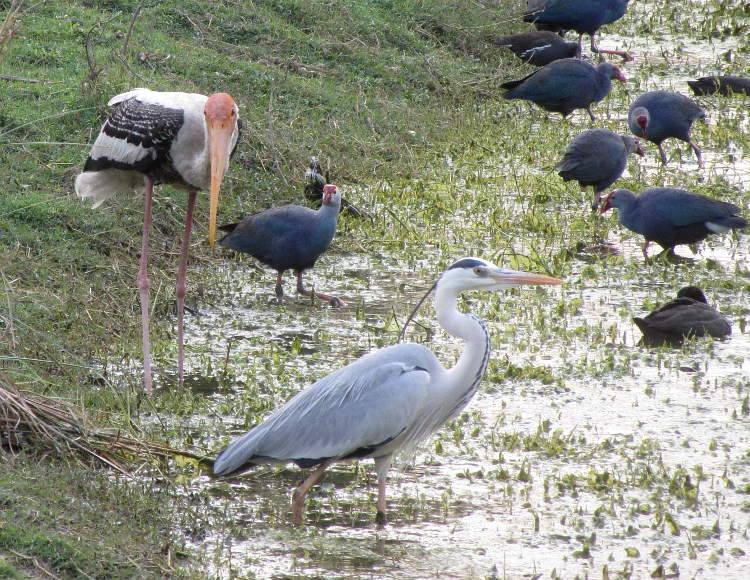
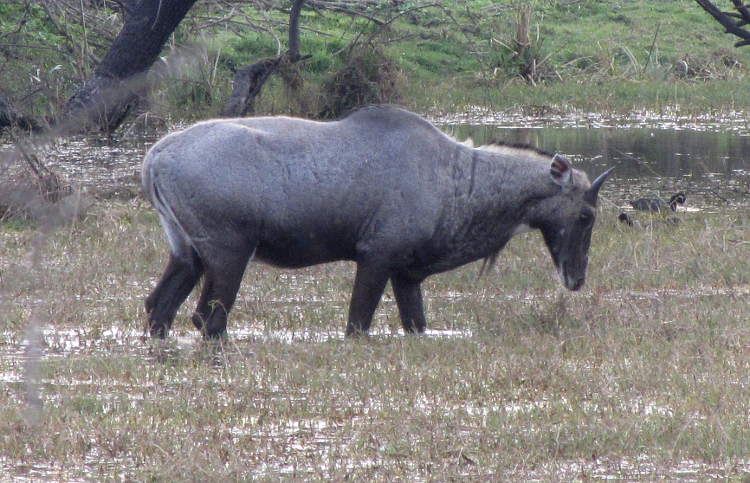


More photos from my trip to Fatehpur Sikri and Kaladeo N.P.
After Agra and Bharatpur, the final leg! Off to Delhi.
Map of the journey: